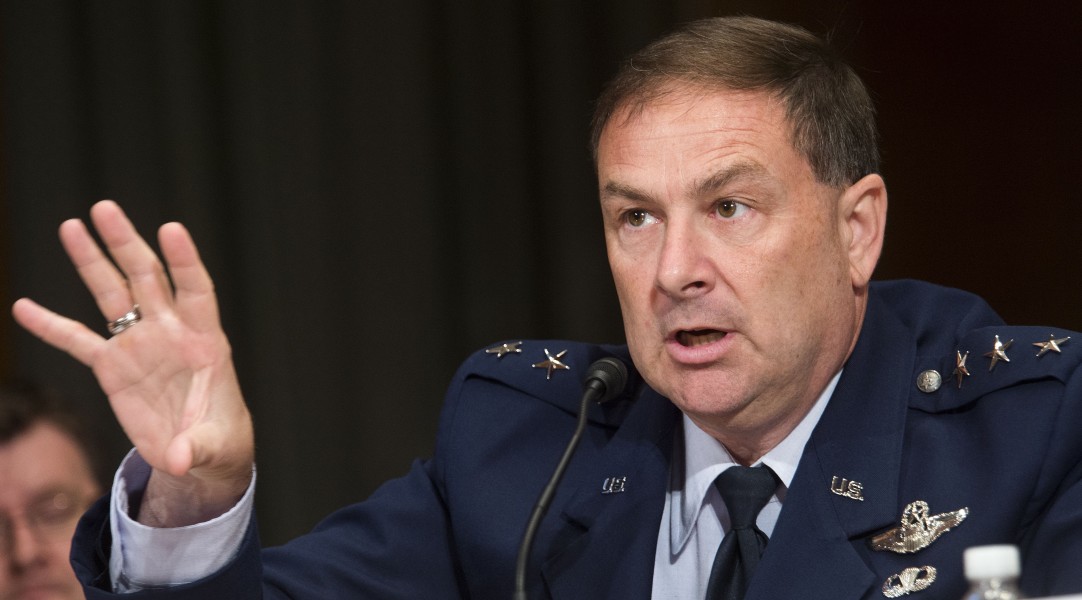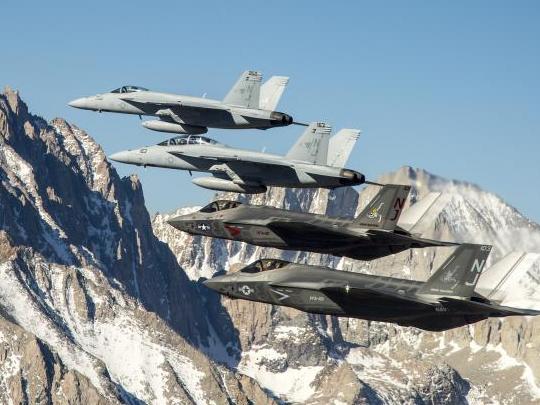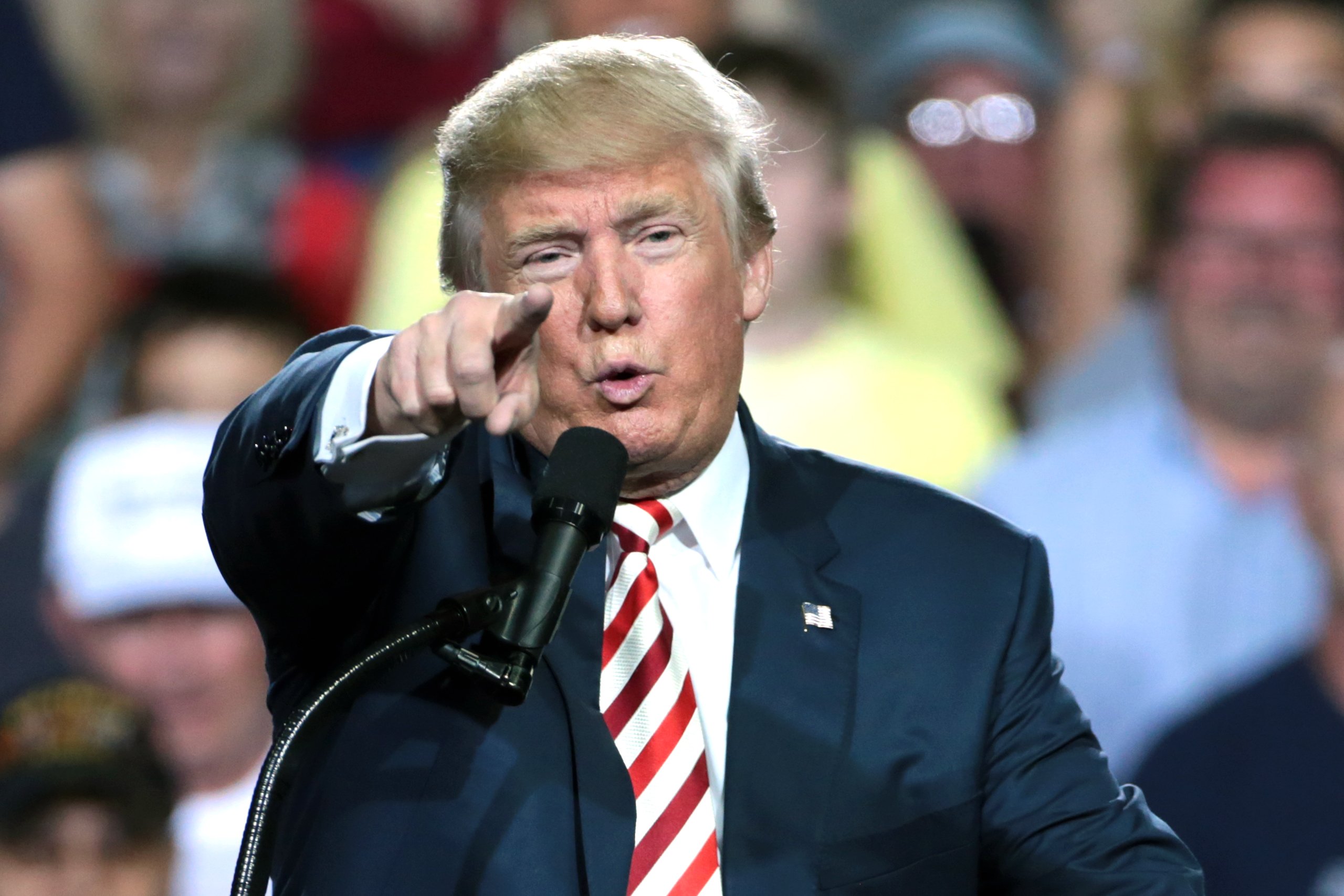WASHINGTON, D.C. — Two phone calls then President-elect Donald J. Trump made to the military head of the F-35 Joint Strike Fighter program officeled to a Pentagon review to compare capabilities of the JSF to an advanced variants of the F/A-18E/F Super Hornet, the head of the JSF Joint Program Office told a House panel on Thursday.
Air Force Lt. Gen. Christopher Bogdan told the House Armed Services tactical air and land forces subcommittee the two calls – one with just Trump on Jan. 9 and a second on Jan. 17 with Boeing CEO Dennis Muilenburg – promoted the study order from Secretary of Defense James Mattis a week after Trump’s inauguration.
“It’s important to understand in the discussions that we had were all predecisional, there were no decisions made during those conversations and it’s my belief that President-elect Trump was attempting to get more information in its F-35 and its affordability and try and gain more information about the F-35’s capability relative to the Super Hornet and to gain more information of the presidential aircraft replacement program,” Bogdan said.
“In fact, the questions that he asked and the answers that I gave were the foundation of the tasks that came out from Secretary Mattis two weeks ago and our ongoing right now.”

The calls were first reported by Bloomberg wire service on Thursday.
The review directs Deputy Defense Secretary Bob Work to “oversee a review that compares F-35C and F/A-18 E/F operational capabilities and assesses the extent that F/A-18E/F improvements (an advanced Super Hornet) can be made in order to provide a competitive, cost effective, fighter aircraft alternative.”
The Navy’s director of air warfare – Rear Adm. DeWolfe Miller – told the panel that the service did not view the study as a competition between the two airframes.
“You hear the word competing but that’s not the way the Navy is looking at it. The Navy views our F-18 Super Hornet and its fourth generation capabilities and the capabilities that come with the exquisite F-35C as complimentary,” Miller said.
“Our view is that we end up with a carrier air wing mix that would provide two squadrons of F-35Cs and two squadrons of Super Hornets. That complimentary capacity of the Super Hornet and the capability of the F-35C is going to handle us well in the near term and as we continue to grow that capability embarked.”

However, Miller was quick to remind the panel the Navy’s short-term need for strike aircraft. Service leaders have been vocal on the readiness issues with its high-demand strike fighter fleet – with up to half of Super Hornets in the inventory unable to fly at any given point.
“We have a shortfall in the Navy on our carrier flight decks, in our strike fighter inventory management. So that mix and what we need to buy now to be something that we need to take seriously so we have to address our near-term issues as well as make sure our warfighting needs are met,” Miller said.
The Navy has been the coolest of the trio of services buying the aircraft and has not been shy of offering some amount of the fighters up for cuts during internal Pentagon budget negotiations, USNI News understands. It intends to deploy the F-35C carrier variant in 2021.
The following is the transcript of Bogdan’s description of his calls with then President-elect Trump before the HASC on Feb. 16, 2017.
The first time I met the president-elect was in mid-December in Mar-a-Lago in Florida with a number of other senior military officers.
That discussion centered around the F-35 and the presidential aircraft. Following that meeting I had two follow-up phone calls with the president-elect –one of them was on the 9th of January and one of them was on the 17th of January.
On the 9th of January that phone call it was just myself and President-elect Trump. On the 17th of January it was myself, President-elect Trump and Mr. Muilenburg, the CEO of Boeing.
It’s important to understand in the discussions that we had were all predecisional, there were no decisions made during those conversations and it’s my belief that President-elect Trump was attempting to get more information in its F-35 and its affordability and try and gain more information about the F-35’s capability relative to the Super Hornet and to gain more information of the presidential aircraft replacement program.
In fact, the questions that he asked and the answers that I gave were the foundation of the tasks that came out from Secretary Mattis two weeks ago and our ongoing right now.
The first of those being, what are you doing to improve the affordability of the F-35 now and in the future and how can we be sure the taxpayers are getting the best value for their dollar and the second of those tasks was on the mix – the complimentary mix of Super Hornets, Advanced Super Hornets and F-35Cs on the deck of an aircraft carrier where he asked for a comparison of the capabilities and they are not completed yet.






